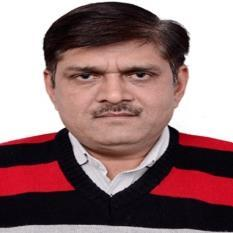
R. K. Yadav
Work place: Raj Kumar Goel Institute of Technology Ghaziabad, U. P
E-mail: ravipusad@gmail.com
Website:
Research Interests: Engineering, Image Processing, Image Manipulation
Biography
Dr. Ravindra Kumar Yadav is Professor & Head in the Department of Electronics & Communication Engineering at RKGIT, Ghaziabad. He is B.E , M.E. And PhD in the field of Electronics & Communication engg. He has 25 years of rich experience in Teaching, Research & Development activities, Administration, Managing & Upbringing of higher Educational Institutions. He has guided several B. Tech and M. Tech project and also guiding PhD students form IIT Dhanbad as co guide. He published 75 papers to his credit in international/national journals, conferences and symposiums. Prof. Yadav is Reviewer for several National/International Journals of high repute. He has chaired/participated technical sessions at multiple international and national conferences / seminars held throughout the country
Author Articles
Review on: Analysis of an IoT Based Blockchain Technology
DOI: https://doi.org/10.5815/ijeme.2022.02.04, Pub. Date: 8 Apr. 2022
Blockchain is the technology which in the last decade has influenced our lifestyles most. Bitcoin is a word used frequently for Blockchain. For example, scalability and protection issues that stands up because of the immoderate numbers of IoT items within the community. The server/client version calls for all devices to be connected and authenticated via the server, which creates a single point of failure. Therefore, shifting the IoT machine into the decentralized course may be the right selection. One of the popular decentralization structures is blockchain. The Blockchain is a powerful technology that decentralizes computation and management methods that may resolve many of IoT troubles, in particular safety.Many Blockchain still confuse Bitcoin, even if it's not equal. Bitcoin is one of several applications are available in Blockchain technology. First of all we present an outline of blockchain architecture and compare a few popular consensus methods in various blockchains. This study also introduced the entire blockchain ecosystem of all the articles we examined and summed up. Furthermore, analyses and consensus models are conducted on many blockchain platforms. Finally, we analyze key issues which are necessary for the future of blockchain technology in these key fields to be broadly available.
[...] Read more.Extraction of Facial Features for Detection of Human Emotions under Noisy Condition
By Mritunjay Rai R. K. Yadav Agha A. Husain Tanmoy Maity Dileep K. Yadav
DOI: https://doi.org/10.5815/ijem.2018.05.05, Pub. Date: 8 Sep. 2018
Affirmation of human faces out of still pictures or picture progressions is an as of now making research field. There are an extensive variety of engagements for structures adjusting to the issue of face limitation and affirmation e.g. exhibit based video coding, face conspicuous confirmation for security structures, look area, and human-PC connection. The acknowledgment and region of the face, and furthermore the extraction of facial features from the photos, are fundamental. In view of assortments in illumination, establishment, visual point and outward appearances, the issue becomes complicated. This paper presents a novel method to extract human facial features for the detection of human emotions (such as “sad”, “happy”, “sorrow” etc.) under noisy conditions. This whole work constitutes better working of a video surveillance system. For detection and extraction of facial features simple formulae are used to represent skin color models depending on the range of HSV (Hue, Saturation, Value) values used for the detection of human skin. Here HSV color model is used because it is fast as well as compatible with human color perception. Additionally, implementation of Probability Neural Network (PNN) enhances the working of the surveillance system. Utilization of PNN expands the ability of surveillance framework as it can give the yield image regardless of whether the information image contains noise in it. The proposed algorithm for the entire task is developed using MATLAB software along with suitable Image Processing Toolbox (IPT).
[...] Read more.Other Articles
Subscribe to receive issue release notifications and newsletters from MECS Press journals